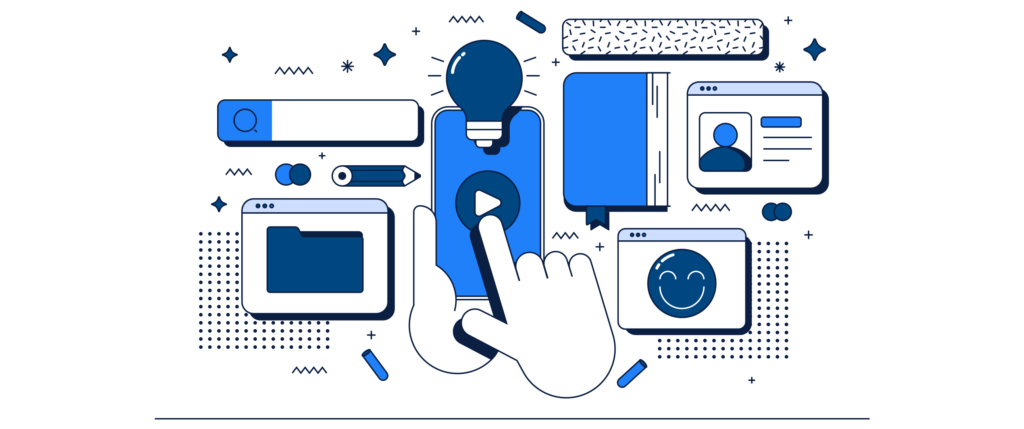Inclusive and ethical app design helps developers create fair, accessible, privacy-focused, and trustworthy mobile experiences. Learn 12 powerful strategies for WCAG accessibility, ethical AI, transparent data practices, inclusive UX, cultural diversity, and long-term engagement.

Inclusive and Ethical App Design: How to Build Mobile Experiences for Everyone
Inclusive and ethical app design is now a foundational requirement in modern mobile development. Users expect apps that are accessible, culturally aware, non-discriminatory, and respectful of their privacy. As technology influences everyday life, developers hold a responsibility: build mobile products that uplift all users rather than exclude or manipulate them.
This guide explains the core principles, tools, and best practices required to create mobile apps that are inclusive, ethical, and globally accessible
-
Introduction
-
What Is Inclusive and Ethical App Design?
-
Why Inclusive and Ethical Design Matters
-
Key Principles of Inclusive App Design
-
Ethical Considerations in Mobile Development
-
Tools & Best Practices
-
Real-World Inclusive App Examples
-
Measuring & Maintaining Inclusivity
-
Future Trends
-
Conclusion
-
External Resources (DoFollow Links)
-
Recommended Internal Links
In today’s fast-evolving digital landscape, building mobile applications goes beyond sleek interfaces and fast performance. Users expect apps that are not only functional but also inclusive, accessible, and ethically designed. Inclusive and ethical app design ensures that your product serves all users fairly, respects privacy, and supports a diverse, global audience.
This post explores best practices, tools, and strategies to create mobile experiences that are equitable, responsible, and engaging, providing a roadmap for developers, UX designers, product managers, and tech leaders.
What Is Inclusive and Ethical App Design?
Defining Inclusivity in Mobile UX
Inclusive app design is the practice of creating digital experiences that cater to users of all abilities, backgrounds, and contexts. This includes people with:
- Visual, auditory, cognitive, or motor impairments
- Language differences or literacy challenges
- Diverse cultural or socio-economic backgrounds
In practice, inclusivity means building apps that everyone can access, navigate, and benefit from, regardless of their physical or digital limitations.
The Principles of Ethical App Development
Ethical app design goes hand-in-hand with inclusivity. Key principles include:
- Respect for Privacy: Transparent data collection and consent
- Fairness and Non-Discrimination: Avoiding biased algorithms or manipulative interfaces
- Transparency: Clear communication of policies, permissions, and recommendations
- Accountability: Developers and organizations take responsibility for app impact
Together, inclusivity and ethical design create trustworthy, socially responsible apps that benefit users and society.
Why Inclusive and Ethical Design Matters
Social Impact and Digital Equity
Inclusive design addresses the digital divide, ensuring apps serve people with disabilities, older adults, and marginalized communities. This not only aligns with human rights principles but also enhances social equity in technology adoption.
Legal and Regulatory Compliance
Global standards and laws increasingly require inclusivity:
- Americans with Disabilities Act (ADA) and Section 508
- Web Content Accessibility Guidelines (WCAG)
- European Accessibility Act (EAA)
- GDPR for data privacy
Compliance protects your organization from legal risk and demonstrates commitment to ethical practices.
Business Benefits: Engagement, Retention, and Reputation
Inclusive and ethical apps drive tangible business outcomes:
- Increased User Engagement: More users can access and interact with your app
- Higher Retention Rates: Inclusive design reduces frustration and churn
- Positive Brand Reputation: Ethical practices improve public perception and loyalty
Key Principles of Inclusive App Design

Accessibility: WCAG and Mobile Guidelines
Accessibility is foundational to inclusivity. Core guidelines include:
- Text alternatives for images and icons
- VoiceOver and TalkBack compatibility for screen readers
- Keyboard and gesture navigation for non-touch users
- Readable fonts, sufficient contrast, and scalable UI elements
Implementing these standards ensures your app is usable by people with visual, auditory, or motor impairments.
Multilingual and Cultural Considerations
A globally inclusive app must account for:
- Multiple languages and localized content
- Cultural nuances in imagery, color schemes, and metaphors
- Right-to-left (RTL) languages for global inclusivity
User-Centered Design and Persona Diversity
- Conduct research with diverse user personas
- Include underrepresented groups in testing
- Iterate based on real feedback from a variety of demographics
Color, Contrast, and Readability
- Ensure sufficient contrast ratios for legibility
- Avoid color-only indicators; use shapes and text
- Support text resizing and dark mode for flexible readability
Ethical Considerations in Mobile App Development
Data Privacy and Transparent Permissions
- Collect minimal data necessary for functionality
- Request permissions only when needed
- Provide clear explanations for data usage
Avoiding Dark Patterns and Manipulative UX
- Avoid deceptive designs that trick users into unwanted actions
- Provide opt-out options and honest messaging
- Promote user autonomy and informed choice
Responsible AI and Algorithmic Fairness
- Test AI models for bias against age, gender, race, or disability
- Use diverse datasets to train predictive models
- Monitor AI recommendations for ethical compliance
Tools and Best Practices for Implementation
Accessibility Testing Tools
- VoiceOver (iOS) & TalkBack (Android): Screen reader simulation
- Axe Accessibility: Automated accessibility testing
- Lighthouse: Web and PWA accessibility audit
- Color Contrast Analyzers: Ensure readable content
Ethical Design Frameworks and Guidelines

- Microsoft Inclusive Design Toolkit
- Google Material Design Accessibility Guidelines
- IDEO Human-Centered Design Principles
Real-World Case Studies of Inclusive Apps
- Be My Eyes: Connects visually impaired users with volunteers
- Duolingo: Multilingual, accessible learning with inclusive gamification
- Robinhood: Ethical finance design with transparent communication
Measuring and Maintaining Inclusivity and Ethics
Key Metrics for Inclusive UX
- Accessibility compliance scores (WCAG 2.1)
- Screen reader usability success rate
- Task completion rates across diverse user groups
- User feedback on inclusivity
Continuous Feedback Loops and User Testing
- Conduct remote and in-person testing with diverse users
- Use surveys and analytics to track inclusive engagement
- Iterate rapidly on accessibility improvements
Auditing and Compliance Checks
- Regularly audit privacy policies and permissions
- Conduct bias testing for AI models
- Monitor compliance with global accessibility standards
Future Trends in Inclusive and Ethical App Design
AI-Driven Personalization Without Bias
- Personalization is increasingly AI-powered
- Ethical apps balance customization with user privacy
- Algorithms prioritize fair access and non-discrimination
Global Inclusivity Standards for Emerging Markets
- Expanding mobile adoption in developing regions
- Apps designed for low-bandwidth and older devices
- Support for multiple languages, currencies, and cultural contexts
Gamification and Engagement for Social Good
- Inclusive gamification increases engagement for all users
- Ethical nudges promote positive behavior without coercion
- Encourages learning, health, and financial literacy
Conclusion
Inclusive and ethical app design is no longer a design choice—it is a strategic imperative. By prioritizing accessibility, cultural awareness, ethical AI, and privacy, developers and product teams create apps that serve all users equitably, enhance engagement, and build long-term trust.
Start your next project with inclusive personas, ethical principles, and accessibility-first testing. Build apps that are usable, fair, and responsible, and make technology a force for good.
SEO Summary:
- Title keyword: inclusive and ethical app design
- Subtopic keywords: accessibility, ethical app development, inclusive UX, inclusive mobile apps, ethical technology, diversity in design, WCAG, AI fairness, privacy compliance


